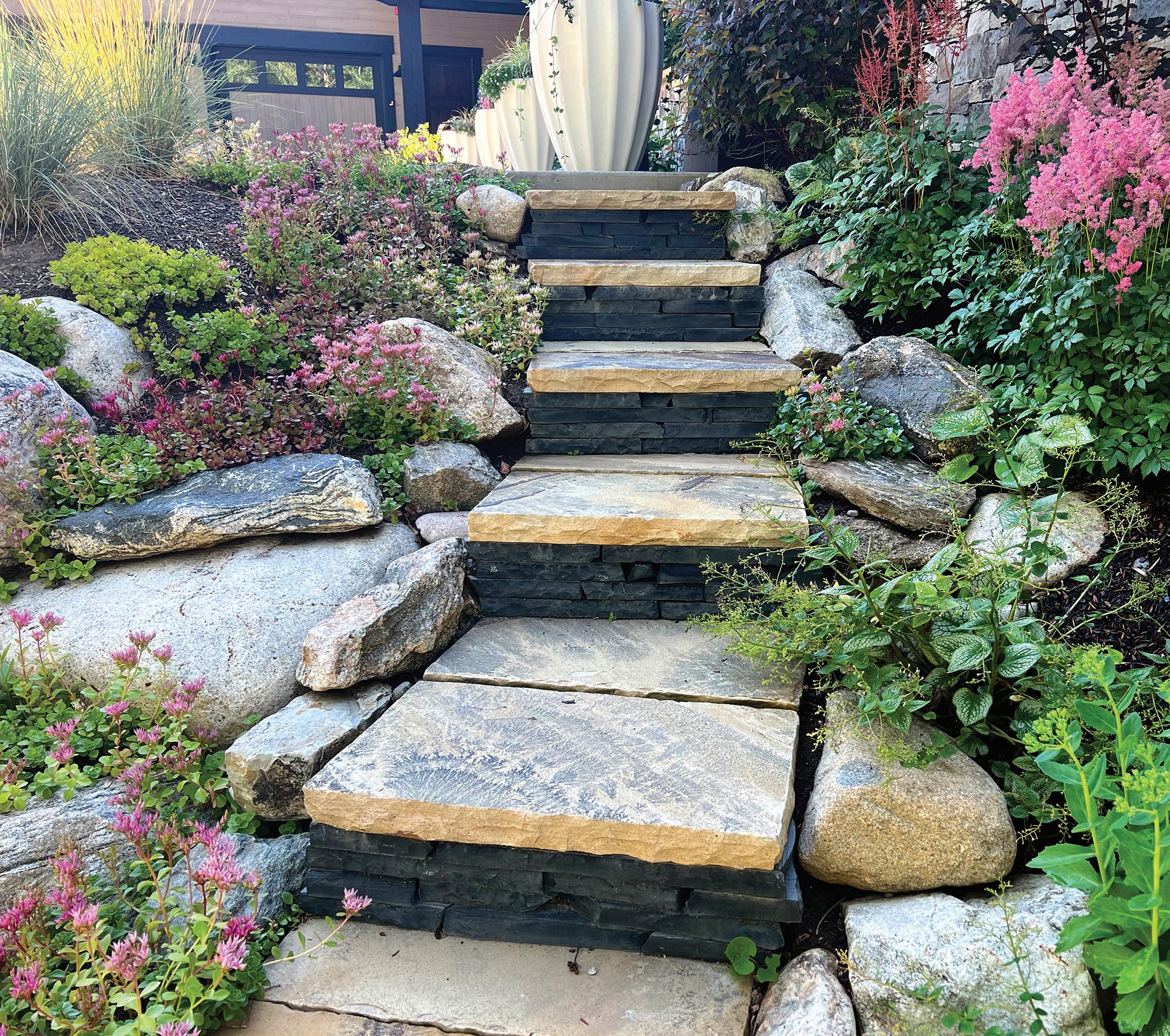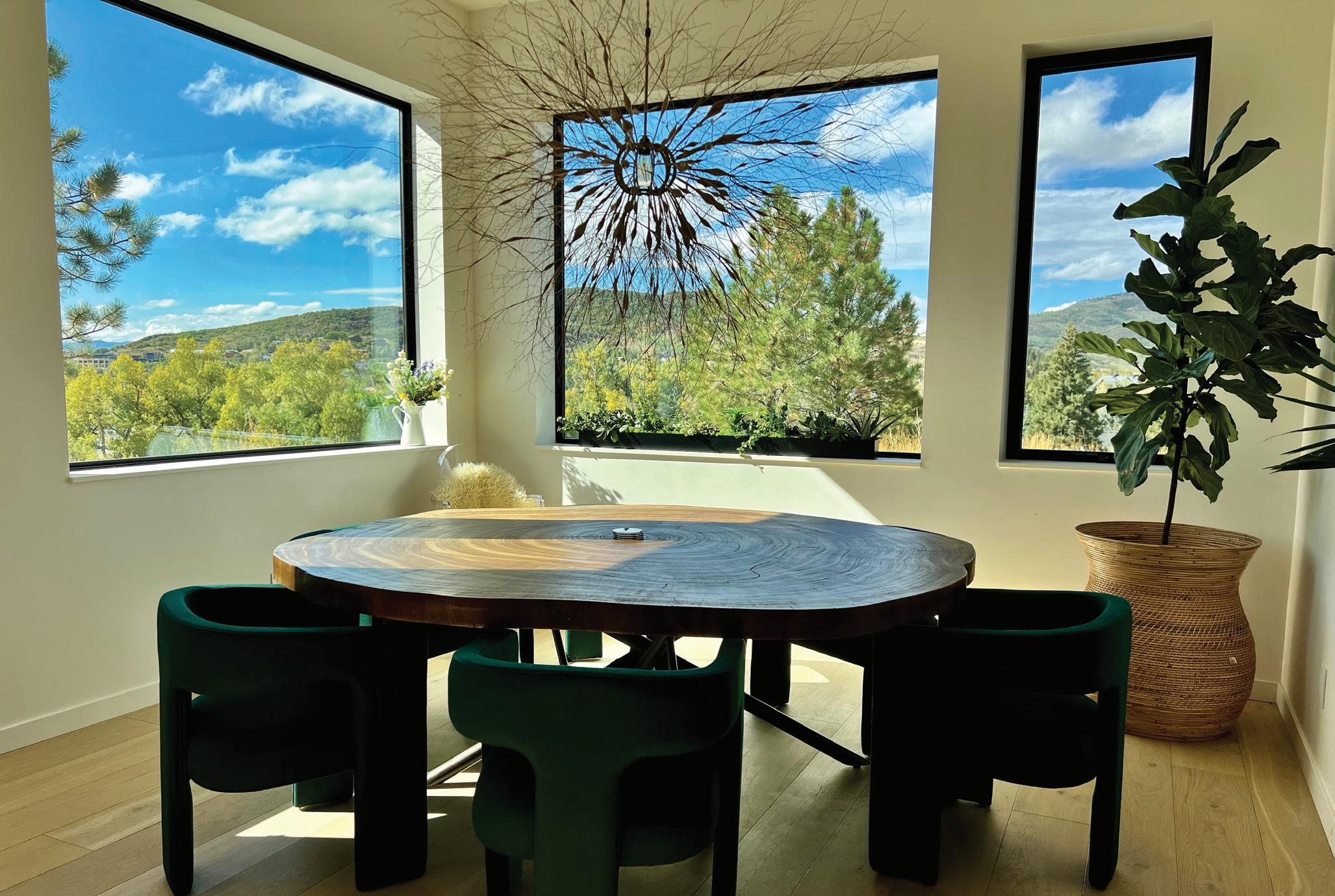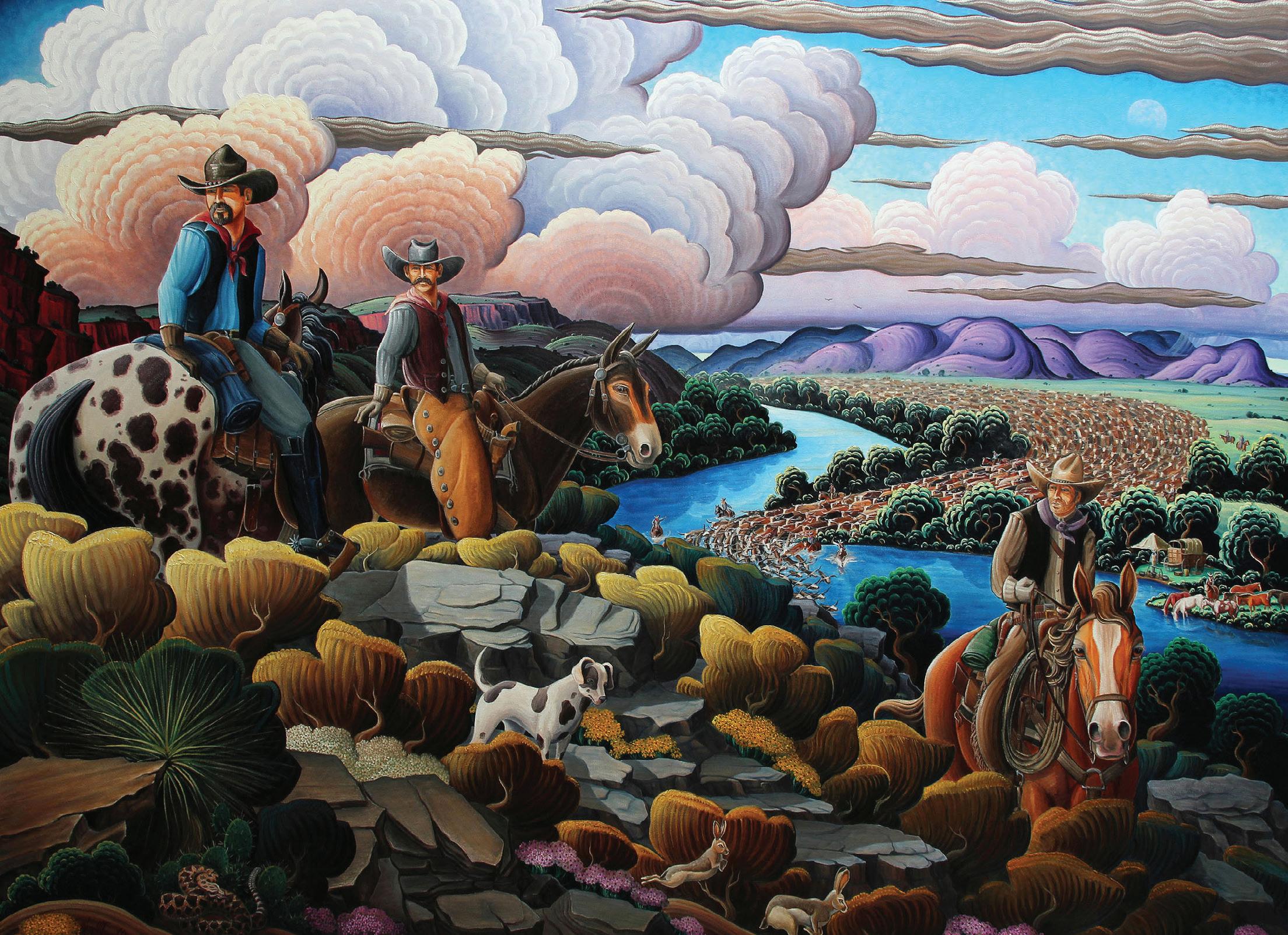Design to Last
by AwA
Emmanuelle Vital and her business partner, Dakota Betz recently launched Art de Vie (ADV) to design indoor, outdoor and multi-purpose spaces. Their designs aim to amplify a sense of home and community inspired by the people and landscapes they work with. They develop design schemes, source products, and present curated art collections, preferably from local artists. The business does more than decorate, they engage the community with national and international artisan workshops in the valley. “Our aim is to bring the joy and satisfaction of creating one’s own unique artisanal products to our clients,” said Emmanuelle.
Together, Emmanuelle and Dakota bring years of design experience centered on old world and modern European aesthetics combined with global traditional craftsmanship to create timeless spaces designed to last. They conduct extensive research to repurpose soft and hard finishes such as wood floors and vintage furniture. “We pay close attention to the sustainability of our designs and also incorporate natural light, optimal flow, and ‘noble’ materials inside and out to create seamless, rejuvenating environments,” said Emmanuelle. Within their design they also facilitate alternatives to traditional building solutions such as solar installations, green roofs and live walls.
Emmanuelle’s passion for sustainable and beautiful design was recently enhanced during a residence at Biosphere 2, a research center created to better understand the function of the various ecosystems on Earth. There, she worked with renowned artists and scientists to find new ways to engage individuals and communities and help mitigate climate change. The process reminded Emmanuelle that the biosphere isn’t replicable, and awareness of this problem can be brought about through the power of art and design to trigger emotions and well-being. The result was a new business where Emmanuelle could integrate her scientific background, practical design and building experience, and appreciation for art to scale up the awareness of one’s surroundings and inspire mindful lifestyles.
The concept of Art de Vie is based on enhancing appreciation for the simple authentic pleasures of life and designing from this perspective. It is about taking time to connect, to bring joy and satisfaction to both the minuscule and immense activities people undertake. When people pause to consider how spaces and activi-
ties within them impact well-being, they have the opportunity to examine and honor our interconnections with nature and each other. “Whether you are preparing your coffee precisely the way you like it in your kitchen to sit in your favorite sunlit spot in your home or conceptualizing and building a custom home to accommodate your family’s multigenerational interests and uses of space, we see these processes as interrelated to how we plan for, design and ultimately build or renovate purposeful and long-lasting structures,” acknowledged Dakota. “Within the sustainability aspects of a home, we focus on the practicality and grace of the spaces we design. Keeping both aesthetics and costs in mind, we work at the intersection of disciplines and collaborate with all teams to design synergistic spaces. Through the thoughtful experience of building, renovating or decorating a home with our clients by creating lasting designs, using sustainable materials and nostalgic objects, we are setting the backdrop for appreciating the past and creating future memories to last for generations.”
AwA: What is your background in sustainable building?
EV: I have a background in engineering and land and water management. I think of “sustainable” design in terms of built and natural environments and their interconnections. “Sustainability” is a relative and complex concept that requires a systems approach to take into consideration multiple criteria, including environmental, social and economic aspects, as well as functional, technical and aesthetic values.
Through my work in building design, performance optimization and landscape restoration and conservation locally and internationally, I attempt to address the challenges of a sustainable future by focusing on adopting state-of-the-art measures. I continually research better practices as they improve.
I have worked with private homes and landowners, communities, municipalities and public agencies to integrate scientific and artistic methods to design homes, greenhouses, green roofs and trails while protecting open spaces, rivers, rangeland and wildlife. I gained a broad perspective and learned to take an integral approach to building.
For over 15 years, I have worked closely with a local building company on the remodeling of historical and new homes, using various innovative and traditional materials, to reduce the carbon footprint of homes and their impact on natural resources.
AwA: Why is it important for people to be conscious of building materials/design?
EV: It is particularly important for residents in the Yampa Valley to be conscious of building materials and design since we are experiencing unprecedent growth and are bearing witness to our changing climate here locally. Our lifestyles and homes can help mitigate or contribute to environmental degradation and injustice and affect the well-being of our families and community. The consciousness of the interdependence of our lifestyles and the way they might affect others near and far is vital to help protect our valley and create a globally sustainable future for all.
We must step away from “go-to” materials and design, shift questions and ask ourselves how we can build and live better. It is important to keep enriching our knowledge and practices as building materials and design constantly evolve.
AwA: Can you think of one project in Steamboat that would be a good model for sustainable building/design?
EV: The 1904 home we remodeled in downtown Steamboat might be the most sustainable home I have designed for. Repurposing an existing building is often more sustainable than building a new home, particularly in a new location.

AwA: I heard people are moving away from LEED-certified buildings and moving towards city/state guidelines for green building—can you expound on that?
EV: Routt County currently operates under the 2018 International Code Council codes. The codes are adopted nationally to provide standards used in the design, build and compliance process to construct safe, sustainable, affordable and resilient structures in the built environment. Routt County has not yet adopted the latest
codes as it allows time to evaluate the new codes’ relevance to our specific geographic area in our rather extreme climate zone. The evolving energy codes released every few years are becoming more and more stringent, catching up to and even becoming equal to those of other third-party green building guidelines such as LEED. Since 2021 the county is also requiring contractors to be certified to test professional knowledge of code compliance and construction.
Routt County is anticipated to reduce community-wide greenhouse gas (GHG) emissions by 35% by 2030. In the meantime, they recommend adopting policies for all new public buildings to meet LEED Certification standards to help increase energy efficiency. Currently, Routt County GHG emissions are counted at 22% for residential and 33% for commercial.
Art with Altitude
There are other frameworks and rating systems particularly designed for sustainable infrastructures such as Envision, for which I hold a certificate, that takes a very comprehensive approach to public infrastructure planning, design and construction. It takes into consideration community needs, accessibility, capacity, equity, performance, resilience, and afterlife cycles.
Additional guidelines can also be provided through audits, as required in Europe, for the sale of homes. The Yampa Valley Sustainability Council (which fantastic local visionaries and I cofounded when sustainability was a very low priority) can provide energy audits, which are often performed for the sale of a property, and could drive investments in efficiency improvements for existing buildings.
Moving away or stepping up from LEED as the sole guidelines for building sustainability can also allow for setting higher standards and help defray the cost of renewable energy projects. For example, adopting renewable energy mitigation programs, such as requiring large, luxury property owners to offset their energy impact by supporting renewable energy installations and help transition from coal.
AwA: What is one simple thing any family can do to increase environmental sustainability within their homes?
EV: Purchase local goods and services. With lower embedded carbon emissions, buying and hiring locally also supports long-term economic strength and stability in the community while favoring an environment for a robust community of creatives, artisans and producers to provide high-quality local offerings. Small gestures, when practiced in mass, can have a self-perpetuating effect on the multiple facets of sustainability. Shop only for what you truly need and with intention.
ELEVATE THE ARTS: Purchase locally-made housewares and gifts from the talented artisans in your area. Visit artdeviedesign.com or call 970-846-1063 to learn more about making your next building or design project more sustainable. AwA
Page 64: Steps built with repurposed stones and rocks and native vegetation to address erosion and runoff by ADV landscaping partner, Amy Tyrone of Tyrone Brothers.
Page 66: Dining table crafted from reclaimed wood, hand-made chandelier created with trumpet plant and wool upholstered chairs, ADV.
Page 67: Luminous reading corner—Styling by ADV—painting entitled The Show Dog by local artist Josh Rosenthal, vintage Bertoia Butterfly chair and floor lamp.



